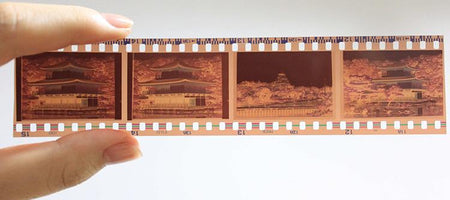The summer solstice always brings memories of playing outside as late as possible to test just how long the sun stays up. Such recollections often meant a camera was close by to take advantage of the sun’s lasting rays. When peering through old photographs and film transfers, have you noticed that your family took a lot of pictures in the summer? Makes sense due to the celebratory sensations warm weather and long daylight hours can bring!
Such feelings of merriment have been around for centuries. We’ve compiled some fun facts about the solstice to give you a better idea of why this summer holiday has been cherished through the years.
Hotter Temperatures Occur When We’re Farther From the Sun
Did you know the northern hemisphere is closest to the sun in early January? But this difference isn’t significant enough to affect the temperature. The reason we experience a hotter season with longer daylight hours in the summer has to do with the earth’s tilt on its axis. The North Pole is tilted toward the sun in the summer months, which is why our hemisphere has longer daylight hours with more intense sunlight (hence the heat).
The Farther North You Are, the More Daylight You Enjoy
In the shoulder seasons the sun is typically up for 12 hours. In places more south like Hawaii the solstice will have 13.5 hours of daylight. In Vermont, there will be 15.5 hours of daylight. Many solstice traditions are derived from northern European nations. Makes sense considering the amount of daylight hours they have during the solstice is drastically different compared to the long, dark winters near the artic circle.
Due to the earth’s tilt, the northern tip will receive full sunlight on the solstice. For most of the summer, the nights are very short at this time of year. But on the contrary, in the winter it’s dark for most or all of the day. If you’ve ever wanted to visit Alaska, go in the summer and you’ll have a full day (literally) to enjoy outdoor activities. Just remember to bring a sleep mask if you have trouble snoozing in light!
Evening Bonfires Have Been a Solstice Tradition for Centuries
Summer campfires are a timeless summer occasion no matter where you live or how old you are! Our ancestors thought the same thing too. Celtic, Germanic, and Slavic groups in Europe used to welcome the summer solstice with bonfires because they believed the fire would harness the sun’s energy for the continuing months into harvest season.
Some folklore thought ash from a solstice fire could protect spectators from misfortune. Slavic celebrators would even jump over fires to cleanse the body and bring marriage fortune. Although leaping over flames might sound fun, we don’t recommend trying this party trick at your next gathering!
Agricultural Abundance Inspired Festivities
In Greek culture the god of agriculture was worshipped and servants were given equal rights to their owners during this holiday. For Egyptians, the solstice brought the beginning of the Nile flooding and thus a fruitful season full of food. To this day, the summer brings bountiful harvests as most communities enjoy farmer’s markets and outdoor feasts.
The Solstice is a Historically Popular Time for Weddings
Druids considered the solstice a ‘marriage of day and night.’ Therefore many couples wed in June due to its association with luck. The midsummer moon was called the ‘Honey Moon’ and most ceremonies included honey in rituals. Another reason weddings were popular at this time was because having a child in early spring meant the baby had a better chance of surviving, and June is exactly nine months prior. Summertime is still considered a popular wedding season, and who knows, you might even have one marked on your calendar for this weekend!
Between weddings and bonfires, the solstice is the perfect time to celebrate the long summer nights with friends and family. And don’t forget to capture every moment with plenty of pictures.













